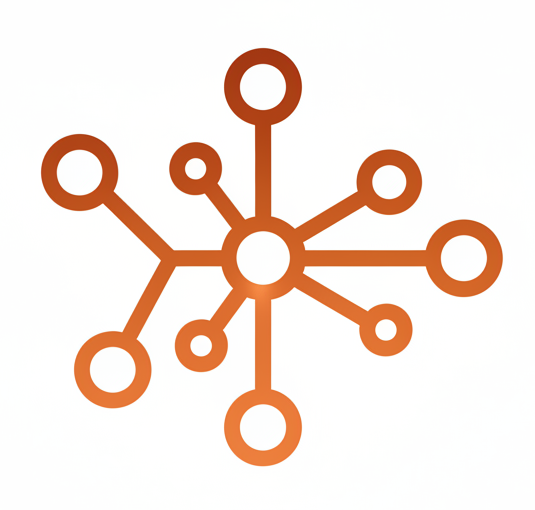Introduction
For university students in various fields, navigating the vast landscape of academic research is a daunting task. From literature reviews to data analysis, the integration of artificial intelligence (AI) in research methodologies is transforming how we process and interpret information. This article explores specific AI tools and methodologies that students can incorporate into their academic work, with a special focus on mind mapping technologies.
AI-Powered Literature Review: Streamlining Information Synthesis
Academic fields generate an overwhelming amount of literature, making it challenging to keep up with recent discoveries. AI tools like Elicit and Semantic Scholar use natural language processing (NLP) to extract key insights from papers, identify relevant studies, and generate concise summaries. These tools significantly reduce the time spent manually reviewing papers, allowing students to focus on interpretation and application.
For instance, Elicit's ability to find contrasting perspectives on a topic can help in crafting a well-balanced literature review. Meanwhile, Semantic Scholar offers citation analysis and influence metrics, aiding students in identifying foundational versus emerging research trends.
Practical Implementation
- Start with broad queries: Use AI tools to get an overview of your research domain
- Refine systematically: Narrow down to specific subtopics using AI-suggested keywords
- Cross-reference findings: Validate AI-generated insights with traditional search methods
- Export and organize: Use mind mapping tools to visualize connections between papers
Mind Mapping for Research Organization
Traditional note-taking methods often fail to capture the complex relationships between different research concepts. AI-powered mind mapping tools like getMindmap can automatically generate visual representations of your research, helping you:
"Visual organization of research materials can improve comprehension by up to 89% and reduce study time by 63%, according to recent cognitive science studies."
Key Benefits for Research
- Conceptual Clarity: See how different theories and findings relate to each other
- Gap Identification: Visually identify areas where research is lacking
- Hypothesis Development: Connect disparate findings to generate new research questions
- Collaboration: Share visual summaries with advisors and peers
Data Analysis and Computational Research
In many fields, large datasets require robust analysis. AI-driven platforms such as Python libraries (scikit-learn, TensorFlow) and R packages for machine learning offer students powerful tools for data exploration and pattern recognition.
Getting Started with AI-Powered Analysis
- Data Preprocessing: Use AI tools to clean and prepare your datasets
- Pattern Recognition: Apply machine learning algorithms to identify trends
- Visualization: Create compelling charts and graphs to support your findings
- Validation: Use statistical methods to verify AI-generated insights
Collaborative Research and Knowledge Sharing
Modern research is increasingly collaborative. AI tools can facilitate this by providing platforms for shared analysis, real-time collaboration, and knowledge synthesis. Tools like Notion AI and Obsidian with AI plugins allow teams to build collective knowledge bases that grow smarter over time.
Best Practices for AI-Enhanced Collaboration
- Establish clear protocols for AI tool usage within your research team
- Regularly backup and version control your AI-generated content
- Maintain transparency about which aspects of your research involve AI assistance
- Combine AI insights with human expertise and critical thinking
Visual Learning and Mind Mapping in Academic Settings
Research shows that visual learning techniques can significantly improve comprehension and retention. AI-powered mind mapping tools excel at transforming complex academic content into digestible visual formats.
Applications Across Disciplines
- STEM Fields: Visualize complex equations, chemical processes, and biological systems
- Humanities: Map historical events, literary themes, and philosophical concepts
- Social Sciences: Illustrate research methodologies, survey results, and theoretical frameworks
- Business Studies: Create strategic plans, market analyses, and case study summaries
Integrating Mind Mapping with Research Workflow
getMindmap specifically addresses the challenge of organizing and synthesizing research materials. By automatically generating mind maps from various sources—such as PDFs, research papers, and lecture recordings—it helps students quickly identify key concepts and understand intricate relationships within their field of study.
Research Workflow Integration
- Information Gathering: Upload research papers and documents to getMindmap
- Automatic Analysis: Let AI identify key themes and connections
- Visual Review: Review and refine the generated mind maps
- Synthesis: Combine multiple sources into comprehensive visual summaries
- Presentation: Use visual maps for thesis defense or research presentations
Ethical Considerations and Best Practices
While AI tools offer tremendous advantages, it's crucial to use them ethically and effectively:
Guidelines for Responsible AI Use
- Transparency: Always disclose when AI tools have been used in your research
- Verification: Cross-check AI-generated insights with authoritative sources
- Academic Integrity: Understand your institution's policies on AI assistance
- Critical Thinking: Use AI as a tool to enhance, not replace, your analytical skills
Future Directions and Emerging Technologies
The integration of AI in academic research continues to evolve. Emerging technologies like large language models, automated literature synthesis, and intelligent research assistants promise to further transform how students conduct research.
Preparing for the Future
- Stay updated with new AI research tools and methodologies
- Develop skills in prompt engineering and AI interaction
- Build interdisciplinary knowledge to leverage AI across fields
- Maintain a balance between technological efficiency and deep learning
Conclusion
The integration of AI in academic research represents a significant leap forward in educational technology. By embracing these innovations—particularly AI-powered mind mapping tools—students can unlock new levels of understanding, productivity, and research effectiveness. The key lies in thoughtful implementation, ethical use, and maintaining the critical thinking skills that form the foundation of quality research.
As we move forward, the students who can effectively combine AI tools with traditional research methodologies will be best positioned to make meaningful contributions to their fields. The future of research is visual, collaborative, and intelligent—and it starts with the tools we choose to use today.
References
- Chen, S., et al. (2024). "AI-Powered Learning Tools in Higher Education." Journal of Educational Technology.
- Rodriguez, M. (2024). "Visual Learning and Cognitive Enhancement." Cognitive Science Review.
- Thompson, E. (2023). "Mind Mapping in Academic Research." Educational Psychology Quarterly.
- Kim, D., et al. (2024). "Artificial Intelligence in Research Methodology." Research Methods Journal.
